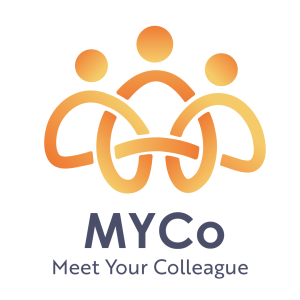15. Based on your experience rate the importance of the following modes of communication to each generation (1- not important and 5- very important)
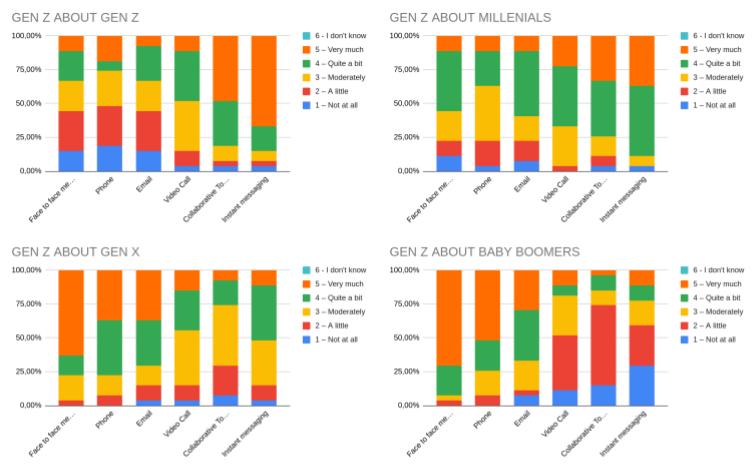
This question asks participants to rate, based on their experience, the importance of various communication modes for each generation present in the workplace. The rating scale ranges from 1 (not important) to 5 (very important). The communication modes considered are:
- Face-to-face meetings
- Telephone calls
- Video calls
- Digital collaboration tools
- Instant messaging
The aim is to understand the specific communication preferences of each generation to improve the effectiveness of intergenerational communication and facilitate workplace collaboration.
Generation Z (14-27 years)
- Self-assessment: Generation Z places great importance on instant messaging and digital collaboration tools, followed by video calls. More traditional modes like email, telephone, and face-to-face meetings are considered less important.
- Perception of other generations: Gen Z perceives Millennials and Gen X as favoring a more balanced mix of digital and traditional communication, while viewing Baby Boomers as more attached to face-to-face meetings and telephone calls.
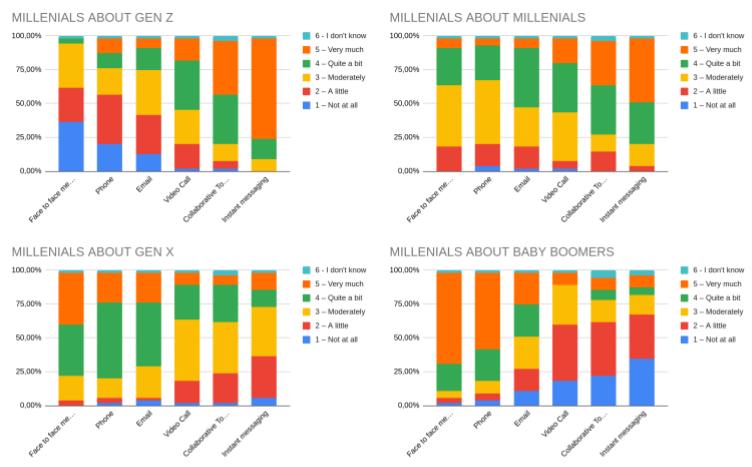
Millennials (28-43 years)
- Self-assessment: Millennials show a balance between digital and traditional channels, giving high scores to email, video calls, and digital collaboration tools. Instant messaging is also appreciated, while face-to-face meetings and telephone receive moderate scores.
- Perception of other generations: Millennials see Gen Z as highly digital-oriented, Gen X as more traditional but open to digital tools, and Baby Boomers as strongly attached to traditional communication modes.
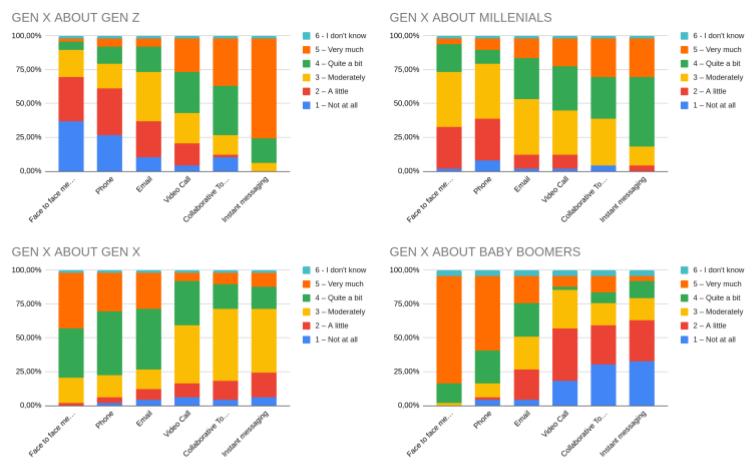
Generation X (44-59 years)
- Self-assessment: Gen X prefers traditional modes such as email and telephone, but acknowledges the growing importance of video calls and digital collaboration tools. Instant messaging scores lower, likely reflecting less frequent use compared to younger generations.
- Perception of other generations: They view Millennials as very digital, Baby Boomers as more traditional, and Gen Z as highly digital but less experienced.
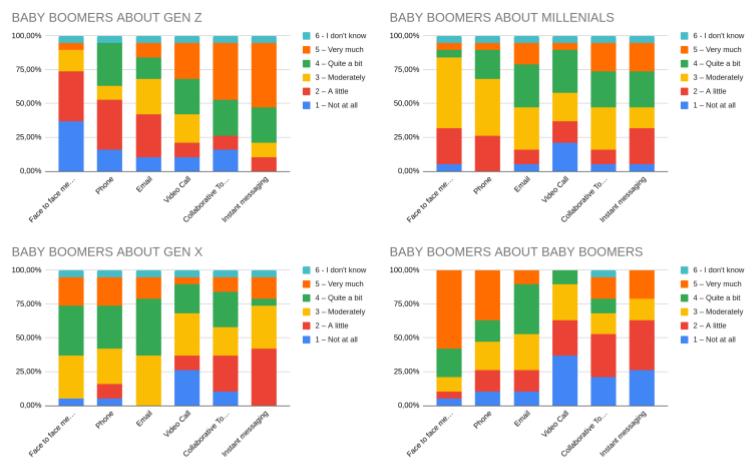
Baby Boomers (60-78 years)
- Self-assessment: Baby Boomers assign the highest importance to face-to-face meetings and telephone, followed by email. Digital modes such as video calls, digital collaboration tools, and instant messaging are less important to them.
- Perception of other generations: They recognize younger generations’ strong preference for digital communication, while seeing their own generation as more tied to traditional methods.
Self-assessments confirm that each generation has distinct communication preferences, with younger generations strongly oriented toward digital tools and older generations favoring traditional communication modes.
Cross-generational perceptions reveal good awareness of these differences, but also some stereotypes: Baby Boomers are seen as less digital-savvy, while Gen Z is viewed as highly digital but less experienced.
These dynamics underscore the importance of adopting flexible and inclusive communication strategies that integrate multiple channels to foster effective intergenerational collaboration.
This post is also available in: German Italian Polish Portuguese (Portugal)
